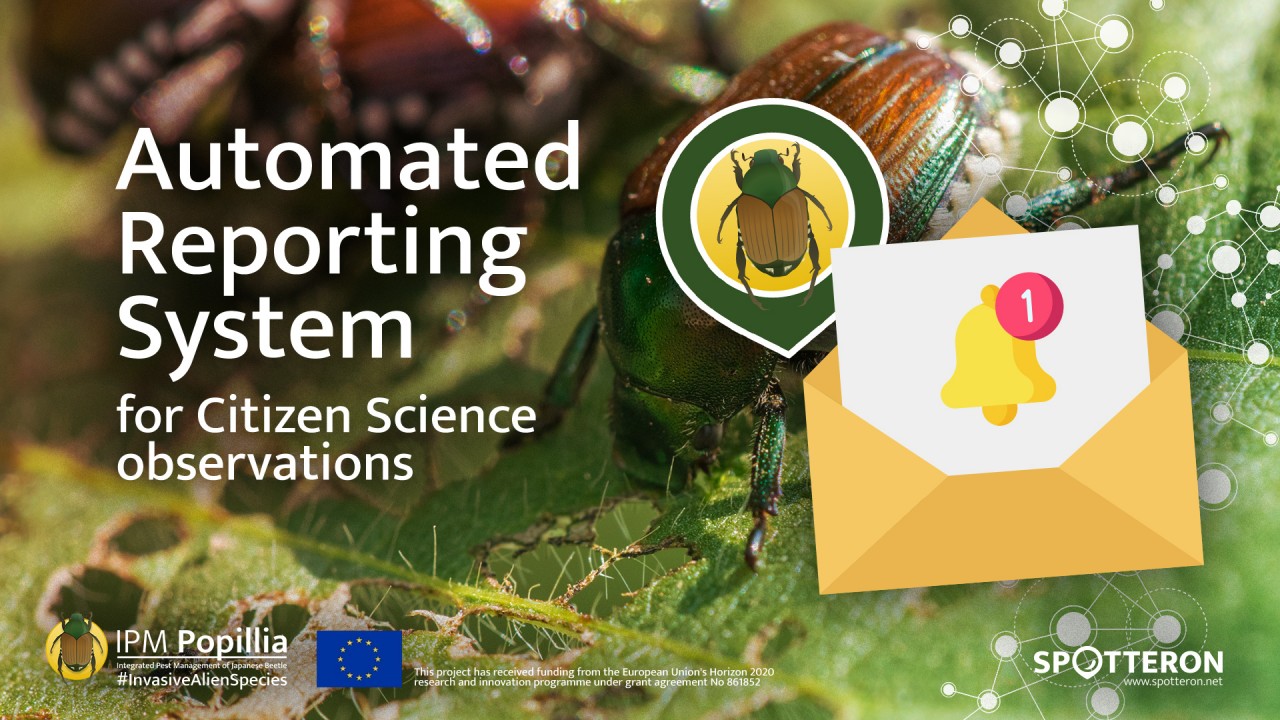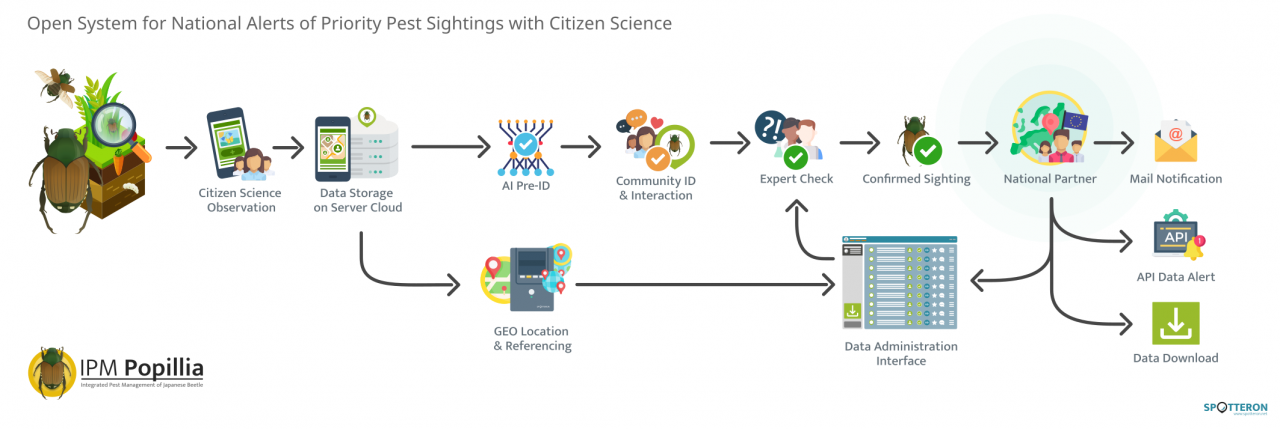Automated reporting of Japanese beetle observations to national authorities within the IPM Popillia Citizen Science App
Regulatory reporting of invasive alien species or controlled pests such as the Japanese beetle to national authorities can be challenging for citizens. Therefore, in the IPM Popillia Horizon 2020 project, the "Automated Reporting System" (ARS) was developed by SPOTTERON for the IPM Popillia Citizen Science App to process automated reports and, after validation by our experts, communicate them to relevant authorities. As an EU-funded Horizon 2020 project, we are also required to report our observations of such species to national authorities - so it is important that data collection in our Citizen Science App include official data reports to government agencies.
Citizen Science to Project Experts per Country or Region
The first level of reports allows experts to be involved in the IPM Popillia Citizen Science project. Whenever a user adds a new observation, official internal or external project experts receive an email notification directly to their inbox containing a link to the new entry. This makes it easy for internal or external project partners to stay informed about new sightings and to check a new post for correctness.
In addition, experts can be set up on a per-country or per-region basis, utilizing the SPOTTERON Project Internationalization Toolkit. This enables further knowledge diversity and the integration of national / regional partners into the App.
Data validation in Citizen Science Apps
Thanks to the "Spot Validation System" in the IPM Popillia Citizen Science App, experts can classify data as correct with just one touch. This application alone makes the new function a valuable enhancement, as experts can now be individually involved and notified. However, since at IPM Popillia it is not only the notification of project partners that is important, a second level has been built into the Automated Reporting System: involving third-party recipients.
Confirmed sightings to national authorities
When an expert confirms the correctness and species identification of an entry in the IPM Popillia Citizen Science App, a second notification can now be triggered for an official report of the project to official recipients. In this way, we enable easy reporting of controlled pests - a task that is often not easy for a citizen, as reporting methods and public bodies are often structured very differently in different countries and even within a country. So the IPM Popillia Citizen Science App makes it much easier for citizens to report their observations to national authorities.
Collaborative approach between Citizen Scientists, experts on invasive alien species in Europe and national authorities
This collaborative approach will create a streamlined and reliable system that is not only capable of managing country- and species-level data, but also of automatically reporting expert-confirmed sightings to the correct contact based on the GEO location of a sighting.
Conclusion
With the new Automated Reporting System and its two levels of reporting, project administrators can stay informed of new sightings and review data immediately. With second-level reports to third parties on confirmed data points, project collaboration can be deepened, and observations can be passed on to the proper regulatory contacts. This makes the IPM Popillia Citizen Science App an important system for reporting invasive alien species, as it provides a new technological bridge for communicating. We are very excited to deploy the ARS and look forward to reporting back here on our blog.
Related Posts
By accepting you will be accessing a service provided by a third-party external to https://www.popillia.eu/









